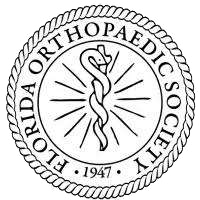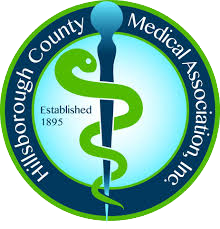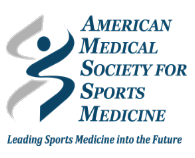An anterior cruciate ligament (ACL) injury can feel like a nightmare for any athlete. One wrong pivot, twist, or landing, and suddenly, your knee gives way. The swelling, instability, and frustration that follow can be overwhelming, especially when your sport is a huge part of who you are. But while an ACL tear can seem like the end of your season—or even your athletic career—it doesn’t have to be. With modern ACL reconstruction surgery, focused sports injury rehab, and the right mindset, you can rebuild strength, stability, and confidence to return to sports safely and stronger than before.
Understanding ACL Reconstruction Surgery
The ACL is one of the key ligaments that stabilizes your knee joint. It connects your thigh bone (femur) to your shin bone (tibia) and helps control forward and rotational movement. When this ligament tears, often due to a sudden stop, jump, or directional change, the knee can become unstable, making it difficult to run, cut, or even walk normally.
ACL reconstruction surgery is designed to restore that stability. Instead of simply stitching the torn ligament back together, the surgeon replaces it with a graft. This is typically a tendon from your own body (hamstring, patellar, or quadriceps tendon) or from a donor. Using minimally invasive techniques and small incisions, surgeons use a camera-guided approach (arthroscopy) to place the graft in the same position as the original ACL. Over time, this graft heals and integrates into your bone, effectively becoming your new ligament.
This procedure not only repairs the mechanical function of your knee but also lays the foundation for a successful comeback—something every athlete dreams of after an injury.
The Road to Recovery: What to Expect
ACL surgery recovery doesn’t happen overnight. It’s a journey that requires time, patience, and consistency. Most athletes can expect a recovery period of 6 to 12 months, depending on their sport, fitness level, and commitment to rehabilitation.
Here’s what that process typically involves:
- Early Recovery (Weeks 1–6):
- The focus is on reducing swelling, regaining range of motion, and gently reactivating your quadriceps.
- Crutches and a brace may be used initially to protect the knee.
- Gentle exercises help prevent stiffness and maintain circulation.
- Strength and Stability (Weeks 6–16):
- Gradual strengthening of the quads, hamstrings, and glutes begins.
- Balance and stability training are introduced to rebuild coordination and joint control.
- Low-impact cardio, like cycling or swimming, may be added as pain allows.
- Advanced Training (Months 4–6):
- More dynamic exercises—jumping, lateral movements, and sport-specific drills—are introduced under supervision.
- Physical therapy intensifies to prepare your knee for the stresses of athletic activity.
- Return-to-Sport Phase (Months 6–12):
- Your physical therapist and surgeon will evaluate your progress through strength tests and movement assessments.
- Once your knee demonstrates proper strength, stability, and confidence, you’ll gradually transition back to full play.
Recovery isn’t just physical. It’s mental too. Many athletes struggle with fear of reinjury or doubt in their ability to perform like before. Working closely with your care team and maintaining a positive mindset can make all the difference.
Tips for a Successful ACL Surgery Recovery
Every athlete’s recovery looks different, but there are universal steps that can help you recover faster and more effectively:
Commit fully to physical therapy.
Your rehabilitation plan is the single most important part of your comeback. Every exercise has a purpose, whether it’s restoring balance, increasing range of motion, or strengthening supportive muscles. Stay consistent and communicate openly with your therapist about your progress and pain levels.
Focus on nutrition.
Recovery takes fuel. Prioritize lean proteins, whole grains, fruits, and vegetables to support muscle repair and reduce inflammation. Staying hydrated and maintaining a healthy weight also reduce stress on your knee as you heal.
Don’t skip rest.
While motivation is great, pushing too hard too soon can backfire. Your body needs rest to rebuild tissue and adapt to training. Follow your doctor’s timeline (even if it feels slow at times) and celebrate small victories along the way.
Strengthen your mind as much as your body.
Sports injuries can take a toll emotionally. Set realistic goals, visualize success, and remind yourself why you started. Many athletes find journaling or mindfulness practices helpful during long recoveries. Remember: resilience is built one day at a time.
Returning to Sports After ACL Surgery
One of the most common questions athletes ask is, “When can I play again?” While the exact timing varies, the focus should always be on returning safely, not just quickly.
Before you’re cleared to play, your care team will evaluate:
- Strength symmetry: Your injured leg should be at least 90% as strong as the uninjured one.
- Range of motion: You should have full, pain-free motion in the knee.
- Functional movement: Jumping, landing, pivoting, and cutting should feel natural and stable.
- Mental readiness: Confidence is key, and you need to trust your knee before stepping back onto the field or court.
Returning to sports after ACL surgery is often done in gradual stages. You may begin with sport-specific drills, move into controlled practice, and finally, full gameplay. This progression helps reduce the risk of reinjury and rebuilds your muscle memory.
The truth is, ACL injuries test an athlete’s patience and discipline. But they also build grit. Many athletes find that their post-surgery training makes them stronger, more aware of their bodies, and more mentally tough than ever before.
Reclaiming Your Strength and Confidence
Sports injury rehab is as much about rediscovering yourself as it is about healing your body. You might have days where progress feels slow, but every stretch, rep, and ice pack moves you closer to the finish line.
So stay the course. Trust your team, trust the process, and most importantly—trust yourself. The field, court, or trail you love will be waiting when you’re ready.
Are you experiencing knee pain or instability from an ACL injury? Call (813) 253-2406 or fill out our online form to schedule a consultation with one of our orthopedic specialists. Tampa Orthopaedic & Sports Medicine is located in Tampa, FL, and proudly serves patients from the surrounding communities.












